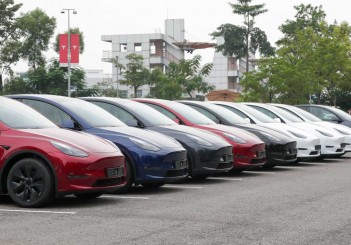Belgian scientists have developed a device that uses light and a special catalyst to clean polluted air, but at the same time produces hydrogen that can then be used to power hydrogen fuel cell vehicles.— AFP
BRUSSELS: There are a number of huge challenges facing the global auto industry, but two of the biggest are reducing pollution and developing replacements for fossil fuel-powered vehicles for a more sustainable future. It has to be said it's early days yet, but some scientists in Belgium have come up with a way of potentially killing both of these incredibly difficult birds with one stone.
Scientists from the University of Antwerp and KU Leuven (University of Leuven) in Belgium have developed a device that uses light and a special catalyst to clean polluted air, but at the same time produces hydrogen that can then be used to power hydrogen fuel cell vehicles.
The device uses a process called, "heterogeneous photocatalysis," which has been used previously to siphon hydrogen from water and nullify gas-based pollutants. However, it's rarely been used to do both at once, but the team now appears to have managed it thanks to what's called a "photoelectrochemical cell," which makes use of solar cells to produce hydrogen in a similar way to electrolysis water-splitting.
According to Professor Sammy Verbuggen, the two processes are performed in the one device in what are being referred to as two individual "rooms," which are separated by a membrane to isolate them from each other. On one side of the device air is purified with a photoanode, while in the other side of the device hydrogen is generated from "a part of the degradation process" thanks to a cathode that's been tucked behind the solid electrolyte membrane.
The key to the team's success so far is the choice of catalyst. Professor Verbuggen explains, "In the past, these cells were mostly used to extract hydrogen from water. We have now discovered that this is also possible, and even more efficient, with polluted air."
But before we get too carried away, the team is quick to point out this apparent wonder device is at a very early stage of development. They insist that what they have come up with so far is little more than a "proof-of-concept," which they also admit has "ample room for improvement."
The device so far only measures a few square centimetres, so it's hardly up to powering fleets of vehicles or counterbalancing our carbon emissions. Every exciting development has to start somewhere though, and this definitely looks to be very encouraging at least.










